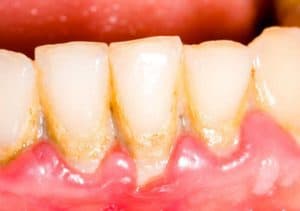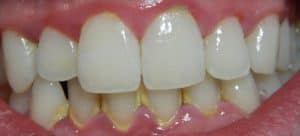In today’s article, we shall review what calculus is and how to deal with it. Calculus, also known as tartar, poses a threat to everybody that wants a healthy and white smile.
If you wish to know why calculus is an issue, and how to prevent it then you are in the right place! We have asked our Los Algodones dentists about it so you will find everything you need here.
Your teeth and calculus

Calculus is formed through plaque. When bacteria feeds off starch and sugar, it forms plaque, a sticky and colorless film that damages our teeth overtime.
Now when plaque gets enough time without being removed, then it turns into tartar or dental calculus. This is a problem as this hardened version of plaque is porous and stickier, so more tartar can stick to it. Moreover, it absorbs pigments easier, leading to tooth discoloration.
It is thanks to daily brushing and flossing that we can keep plaque at bay. Giving as much as two to three days is enough for plaque to solidify and harden into calculus.
How do I know if I have calculus on my teeth?
Plaque is usually hard to spot and sticky, but when it turns into tartar, it makes the surface of the teeth feel more porous. Other than that, you might also notice a change of the tooth color’s.
Your safest bet is to visit a dentist. A professional dentist not only has the tools to spot tartar throughout all your mouth, but also has the tools to deal with it accordingly. It is one of the reasons why visiting one every six months is so recommended!
As a side note, it is important to note that there is no way to completely get rid of plaque, as bacteria will always exists within our mouths. So even if we have a very thorough and complete cleaning through brushing and flossing, it will keep forming! But that does not mean we are completely hopeless against it
Removing calculus
As you may know, once plaque solidifies it cannot be removed with a toothbrush. There are some suggested ways to do it at home as eating certain foods or using dental tool kits, but the fact is that it is pretty tough, considering that you want to get all of it off. Not only that but red, puffy gums can hide parts of the tooth, so gum disease and gingivitis can go unnoticed until it is too late.
This is why a professional dentists is the perfect person for the job. They have the tools and knowledge to remove the calculus from all the spots it usually forms at without missing a thing.
At the office, the process dentists use to remove tartar from the teeth is called debridement. This uses special tools with high vibrations together with water to safely and securely remove calculus. Usually with a visit after some time to checkup on how your mouth is faring and if further treatment is required.
How to prevent calculus
Naturally, we want to avoid having to deal with tartar and dental calculus, so here we give you some tips to do just that:
- Execute good oral care. This includes brushing twice a day and flossing once. The idea is to remove plaque before it has the chance to harden into tartar.
- Have a day where you commit to clean your teeth thoroughly. Have patience and go through each area carefully. Our teeth in the back are always in danger as the crevices and crooks makes it easier to store plaque and food.
- Visit your dentist twice a year. There is nothing better than having a professional give you the input you need to make your oral health better. These professionals know what you are lacking in, and will let you know how to fix that to strengthen your smile.
